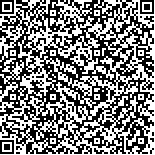下载中心
优秀审稿专家
优秀论文
相关链接
摘要

多波段光学遥感影像配准是遥感卫星地面预处理中的关键环节,其精度决定了遥感数据产品的质量.一般使用波段间图像灰度相关匹配来实现多波段影像的配准.然而,该类方法的配准精度受地物特征影响较大,海面、港口、沙漠等地物特征不明显存在影像无法配准的现象.本文以北京一号(BJ-1) 小卫星多光谱影像的波段配准为研究对象,建立多波段线阵CCD 各探元在CCD 扫描方向和卫星飞行方向的几何偏差模型,来计算多波段影像间同名像元在图像行和列方向上的位置偏差,进而拟合出一个固定的波段配准模型来实现多波段影像的亚像元配准.该方法已应用于BJ-1 和DMC_UK2 小卫星多光谱影像的地面预处理波段配准中,配准误差小于0.5 像元,具有良好的应用效果.
The multi-spectral optical remote sensing image registration is one of the important steps among the ground station preprocessing chain. The accuracy of registration is crucial to product quality assurance. Generally, an image correlation method based on pixel DN is widely used in the multi-spectral images registration processing. However, the registration accuracy of correlation method depends on the character of the landscape in the space camera’s view. The discrepancies of band-to-band registration are commonly observed in those images which are short of manifest feature points such as large scale water surface, desert, meadow, forest and seaport. In this paper, a linear CCD geometric bias model along CCD array and orbit directions of the BJ-1 small satellite multi-spectral camera is presented. The measured geometry bias is a constant value which is derived from the large amount of tie points between NIR and red or green and red bands along the image row and column directions. Finally, the experiment shows that the matched BJ-1 multi-spectral images can achieve sub-pixel registration accuracy without calculating the pixel DN correlation value between the raw images. And the proposed method has been used in the BJ-1 and DMC_UK2 small satellite multi-spectral images registration preprocessing.

